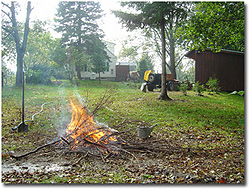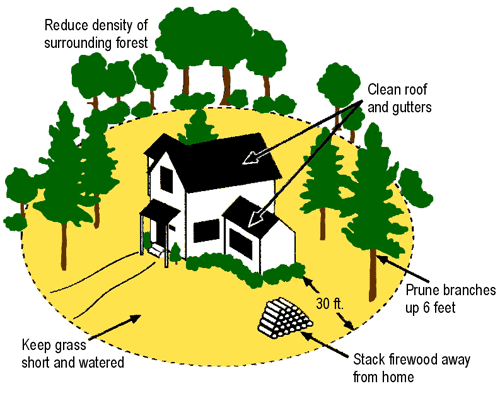 The increasing threat of wildfires to life and property and the continual spread of the population and the wildland urban interface areas throughout the state puts a strain on the local and state resources to suppress wildland fires. The suppression efforts in the wildland urban interface are complicated by the need for the simultaneous suppression of both structural fire and wildfire. The suppression agencies are actively involved in fire prevention efforts with communities but are not solely responsible. It is important for the homeowner to recognize and understand that they are living in a fire prone environment.
The increasing threat of wildfires to life and property and the continual spread of the population and the wildland urban interface areas throughout the state puts a strain on the local and state resources to suppress wildland fires. The suppression efforts in the wildland urban interface are complicated by the need for the simultaneous suppression of both structural fire and wildfire. The suppression agencies are actively involved in fire prevention efforts with communities but are not solely responsible. It is important for the homeowner to recognize and understand that they are living in a fire prone environment.
Homeowners have a responsibility to prepare for a wildfire before it occurs in order to minimize and/or prevent losses when a fire occurs. Creating defensible space – an area of at least 30 feet surrounding the home and outbuildings – serves as a safety zone around the structures. Within this area, the vegetation should be controlled and the area free of dead debris, leaves, and flammable vegetation in order to prevent a wildfire from traveling from the forest to the structure. Maintaining a green space landscaped with fire resistant vegetation improves the safety zone. The roof, exterior, and attachments to the structures (decks, porches or fences) should all be constructed with fire-resistant materials. Homeowners should also plan for and maintain the access routes to the home for emergency vehicles. In addition, each household should prepare a disaster plan. The wildland urban interface poses a tremendous challenge for the structural and wildland fire communities to work with and educate homeowners, homeowner associations, and community planners.

